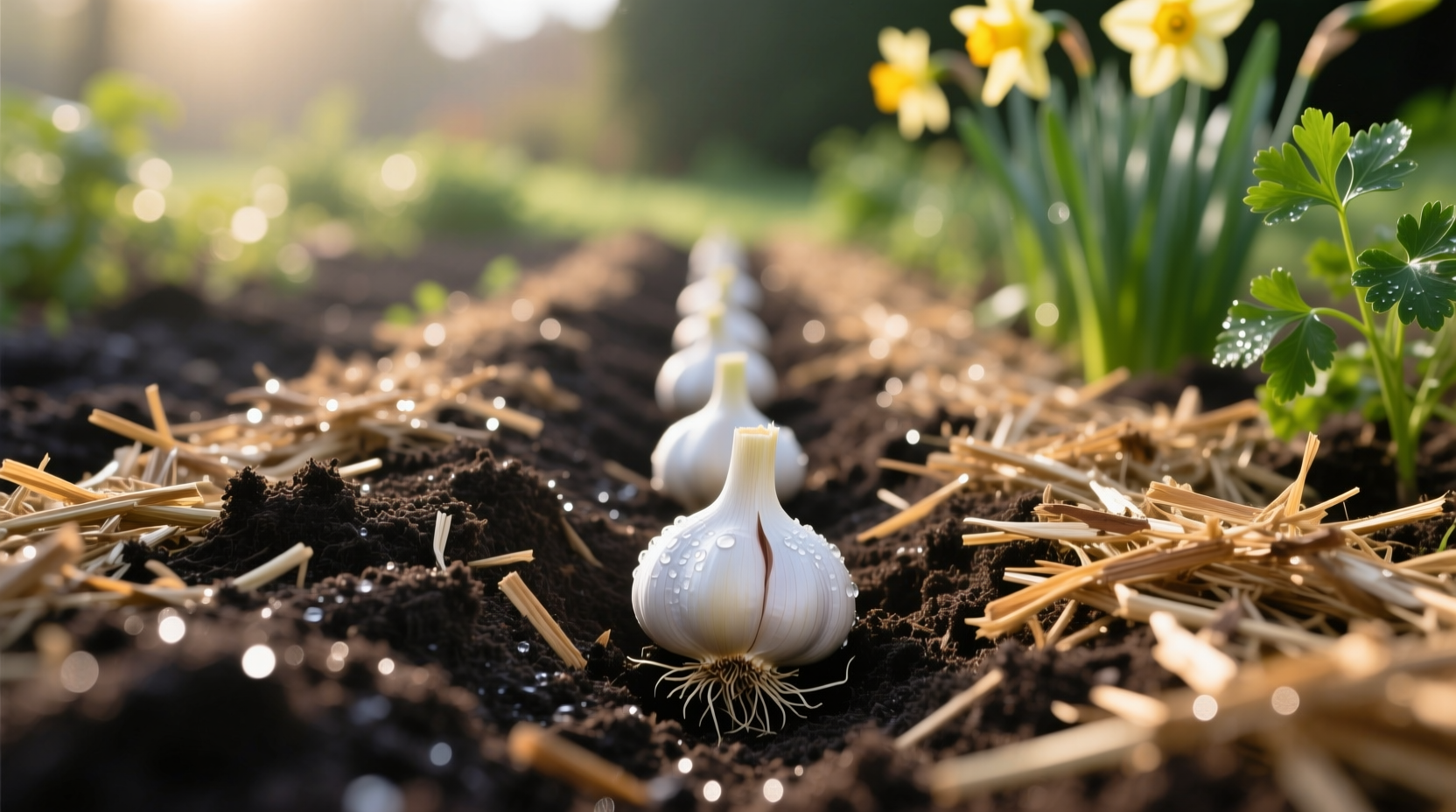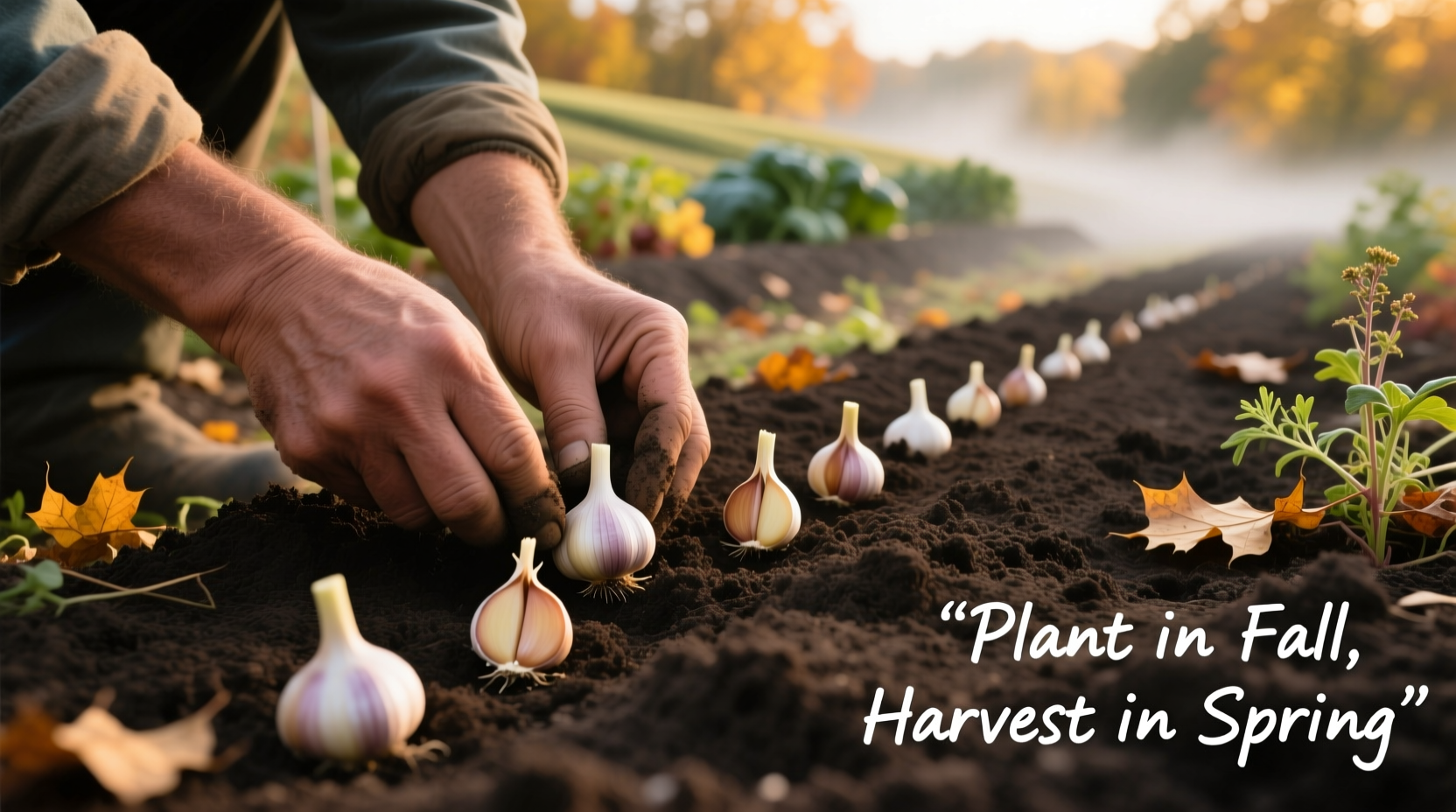Why Fall Garlic Planting Outperforms Spring Planting
Understanding the biological advantage of fall planting transforms your garlic harvest. When you plant garlic cloves in autumn, they develop extensive root systems before winter dormancy while keeping top growth minimal. This "root-first" development creates stronger plants that outperform spring-planted garlic by 30-50% in bulb size according to USDA agricultural studies. The cold exposure triggers proper vernalization, a necessary process for bulb formation that spring-planted garlic often misses.
| Planting Season | Root Development | Bulb Size | Flavor Intensity |
|---|---|---|---|
| Fall Planting | Extensive pre-winter root system | Large, robust bulbs | Complex, well-developed flavor |
| Spring Planting | Limited root development | Smaller, single-clove bulbs | Milder, less complex flavor |
Your Step-by-Step Fall Garlic Planting Timeline
Successful garlic cultivation follows precise seasonal timing. Begin your garlic journey 6-8 weeks before your area's first expected frost date. This timing allows cloves to establish roots without significant top growth before winter. In USDA hardiness zones 3-5, plant September to early October. Zones 6-7: October to early November. Zones 8-10: November to early December. Planting too early risks excessive top growth vulnerable to winter kill, while late planting prevents adequate root development.
Soil Preparation: The Foundation of Great Garlic
Garlic demands well-draining soil with ample organic matter. Two weeks before planting, amend your garden bed with 3-4 inches of finished compost worked into the top 8-12 inches of soil. Garlic thrives in slightly acidic to neutral soil (pH 6.0-7.5). Test your soil and amend accordingly - add lime to raise pH or elemental sulfur to lower it. Raised beds work exceptionally well for garlic, improving drainage in heavier soils. Avoid fresh manure which can cause cloves to rot.
Selecting the Perfect Garlic Varieties for Your Climate
Choosing appropriate garlic varieties based on your hardiness zone significantly impacts success. Hardneck varieties (such as 'Music', 'German Extra Hardy', and 'Spanish Roja') excel in colder climates (zones 1-6) with their superior cold tolerance. Softneck varieties ('Inchelium Red', 'California Early') perform better in milder climates (zones 7-10) where winter chilling is less consistent. Never use supermarket garlic for planting - it's often treated to prevent sprouting and may carry diseases. Source certified disease-free seed garlic from reputable growers like those recommended by the Oregon State University Extension Service.
Planting Technique: Precision Matters
Proper planting technique ensures optimal growth. Separate garlic bulbs into individual cloves the day before planting, keeping the papery husk intact. Plant larger cloves pointy-end up, 2-3 inches deep and 6-8 inches apart in rows spaced 12-18 inches apart. Deeper planting (3-4 inches) benefits colder climates for better winter protection. After planting, water thoroughly to settle soil around cloves. In extremely cold regions (zones 1-4), consider adding an extra inch of planting depth for additional insulation.
Winter Protection: Ensuring Survival Through Cold Months
Mulching is non-negotiable for fall-planted garlic in most climates. Apply 4-6 inches of organic mulch (straw, shredded leaves, or compost) after the ground cools but before hard freezes. This insulation moderates soil temperature fluctuations, prevents heaving from freeze-thaw cycles, and suppresses early spring weeds. In zones 7 and warmer, lighter mulching (1-2 inches) may suffice. Avoid mulching too early, which can encourage premature growth or pest activity. Remove mulch gradually in early spring as temperatures stabilize to allow shoots to emerge.
Spring Care: Maximizing Your Garlic Growth
As winter transitions to spring, your garlic requires specific care. Once shoots emerge, apply a balanced organic fertilizer (10-10-10) or side-dress with compost. Maintain consistent moisture (1 inch per week) during bulb formation in late spring, but reduce watering as harvest approaches. For hardneck varieties, remove scapes (flower stalks) when they curl to redirect energy to bulb development. Monitor for pests like onion thrips and diseases such as white rot, addressing issues promptly with organic methods.
Harvest Timing: The Critical Success Factor
Harvesting at the perfect moment determines storage longevity. For most varieties, harvest when the lower third of leaves turn brown while the upper leaves remain green - typically late June to August depending on your climate and planting date. Gently dig bulbs rather than pulling to avoid damage. Cure harvested garlic in a warm, dry, shaded location with good air circulation for 2-3 weeks before trimming and storing. Properly cured garlic stores for 6-12 months depending on variety.
Troubleshooting Common Fall Planting Issues
Even with proper technique, challenges arise. If cloves fail to sprout in spring, they likely rotted from poor drainage or were planted too early in warm soil. Yellowing leaves often indicate nitrogen deficiency or overwatering. Small bulbs typically result from planting too late, insufficient spacing, or inadequate winter protection. In regions with mild winters, garlic may not receive enough chilling hours, resulting in smaller bulbs - consider pre-chilling cloves in the refrigerator for 4-6 weeks before planting.

Regional Planting Considerations: Climate-Specific Success
Your geographic location dramatically affects garlic planting strategy. In northern climates (zones 1-5), plant earlier (September) with deeper mulch. Southern gardeners (zones 8-10) should select softneck varieties and may need to pre-chill cloves for 4-8 weeks to simulate winter conditions. Mountain regions require attention to microclimates - plant in protected areas with southern exposure. Coastal areas benefit from later planting dates due to moderated temperatures. Always adjust planting dates based on your specific microclimate and current weather patterns rather than calendar dates alone.











 浙公网安备
33010002000092号
浙公网安备
33010002000092号 浙B2-20120091-4
浙B2-20120091-4